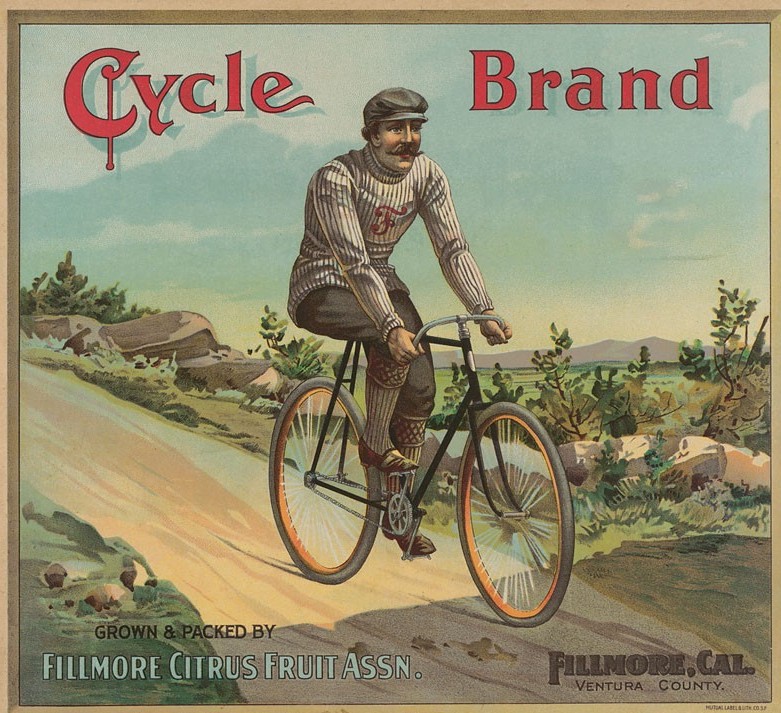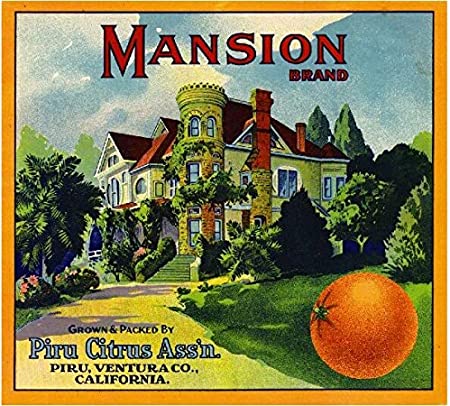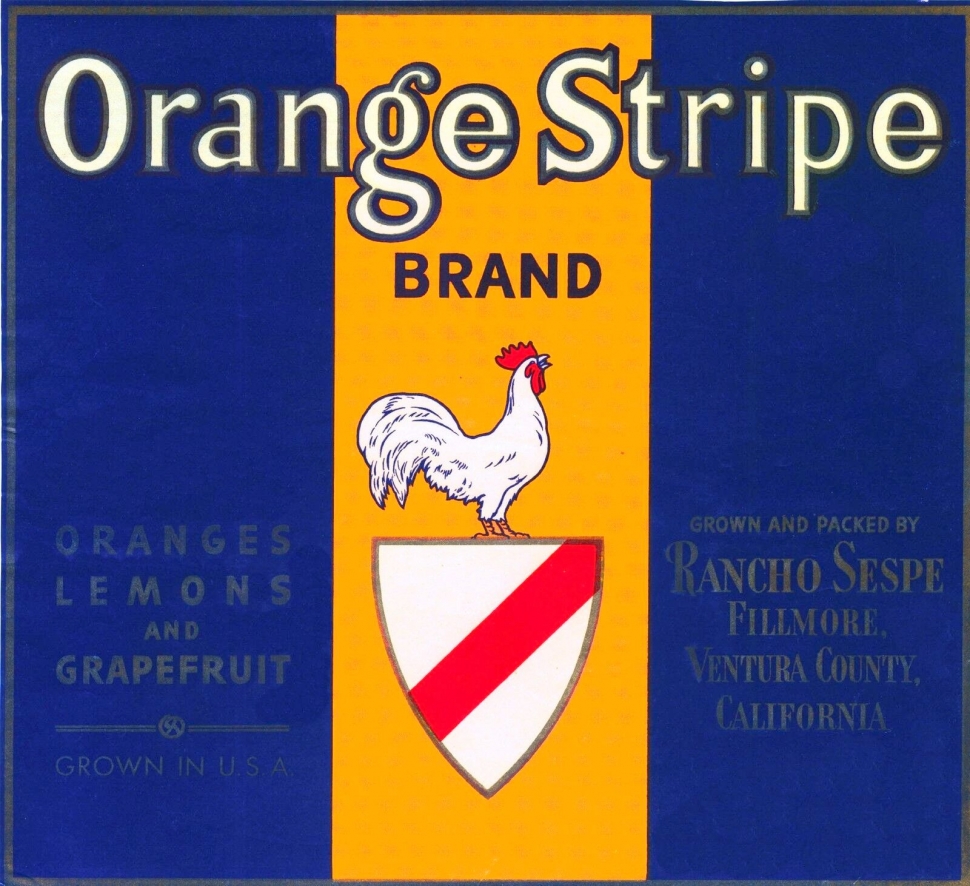|
The Story Behind the Fillmore Citrus Labels
By Gazette Staff Writers — Friday, July 28th, 2023
 Above is the early “Cycle” crate label, Fillmore Citrus Association, c. 1900, printed by Schmidt Lithograph of San Francisco. The label has a cyclist peddling down a path. He is wearing a sweater with “F” on it and a flat cap. Photo courtesy Fillmore Historical Museum.  Above is the Wayno crate label, Fillmore Citrus Association, c. 1935, which according to local lore, the “Wayno” brand was inspired by workers. Photo courtesy Fillmore Historical Museum.  Home of Ramona crate label, Rancho Camulos, prior to 1914  Mansion crate label, Piru Citrus Association  Orange Stripe crate label - Rancho Sespe Courtesy Fillmore Historical Museum In Fillmore it’s easy to see reproductions of fruit crate labels. They are on the sides of buildings, in businesses and original ones are displayed with pride in people’s homes. But what is the why and wherefore of the fruit crate labels? How did they come into being and what did they mean? In 1885, the first orange box labels were designed and lithographed. Development of the use of the offset press with lithographs made the labels relatively inexpensive and quick to produce. The labels identified what the fruit was, where it was grown, who packed it and the grade. Across the label was the trademarked brand name. Rancho Sespe used a label with a stripe going down the center – gold, blue, red, orange or white with a rooster sitting on a shield in the middle of the label. It is said that Eudora Hull Spalding designed the label herself. In 1899, the Fillmore Citrus Fruit Association affiliated with the Southern California Fruit Exchange, which soon became known as Sunkist, to market its fruit. Different grades of fruit had different labels. The Sunkist Cooperative marketed two grades – Fancy Sunkist at the top followed by simply Sunkist which represented the association’s premium grade of fruit. This would be followed “Choice”, one step below the Sunkist grade. Below the Cupid brand was Airship which represented the Sunkist-grade fruit. As with Cupid, the image on the label changed over the years, in this case reflecting the evolution of the airplane. “Legal Tender” was used for Sunkist grade after 1935. It was designed by one of the better-known label designers, Godfrey Nystrom. “Legal Tender” and the “Poinsettia” were originally owned by the Fillmore Packing Company but bought by Fillmore Citrus Association in 1935. The Fillmore Citrus Association’s “choice” grade was represented in the “Cycle” brand beginning in 1897. Cycle Brand is a good example of how the artwork would change over time. It was printed by Schmidt Lithograph of San Francisco. The first label showed a cyclist peddling down a path. He is wearing a sweater with “F” on it and a flat cap. The next version shows the same cyclist, only this time he is on a motorized bicycle. Finally, the meaning of “cycle” changed completely. Instead of a vehicle, “cycle” referred to the cycle of the changing seasons. Each season is represented by a circle with a seasonal landscape. Most brands which were used over several years saw some change in their artwork. According to local lore, the “Wayno” brand came to be by accident. The story goes that Frank Erskine, at that time manager of the Fillmore Citrus Association, needing a new brand name, went to the workers in the packing house for inspiration. They suggested “bueno” or “good”, but Erskine heard it as “wayno” and thus a new brand (and word) was created. Piru Citrus Association had several different labels. “Home of Ramona” had been a proprietary brand of Rancho Camulos, but in 1914 the del Valle family assigned the right to use it to the new Piru Citrus Association. Other early Piru labels included “Mansion” brand whose design went through several versions but always showed the Piru (aka Cook or Warring) Mansion. Other brands included Belle of Piru, Try-sum, Weaver and Triad. Because of nostalgia as well as the beauty of crate labels they are being reproduced and can be bought in many formats. When comes to originals, common ones (such as Sespe and Selva for the Fillmore Citrus Association) can be purchased for a few dollars. Others, such as an original Cycle or Cupid, if you can find one, can be much more expensive. Either way, these mini works of art remind us of a different time. If you want to see more examples of local citrus labels, go to https://calisphere.org/ and search for Fillmore Citrus or Piru Citrus. |
